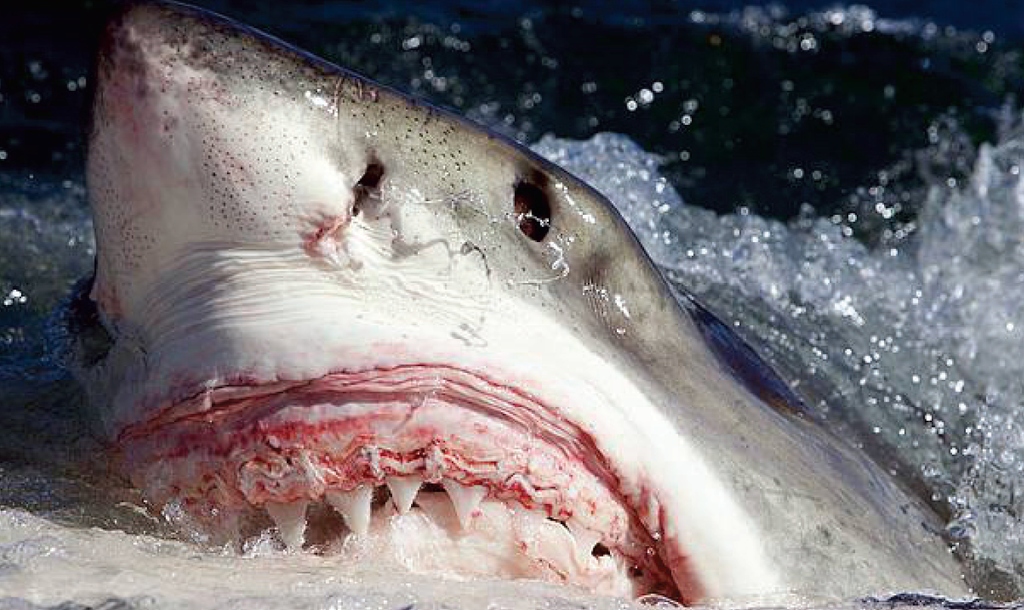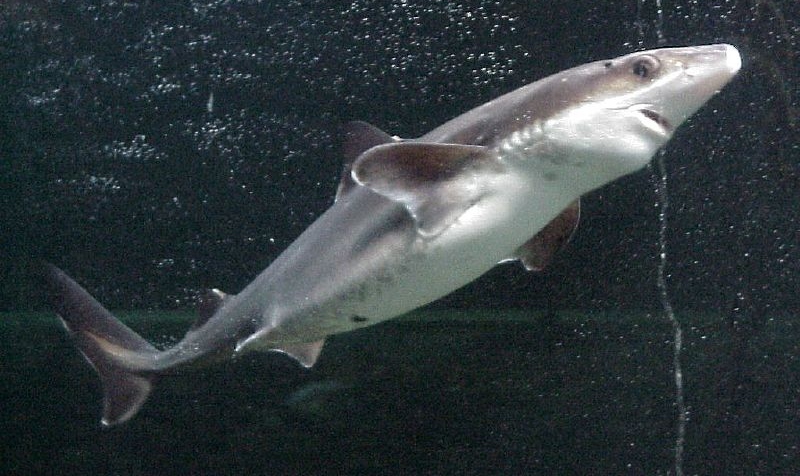Even in a pandemic-dominated media landscape, news of shark attacks never goes unnoticed; in 2020 we have already learned of five fatal incidents in Australia, as well as at least two others in California and Maine. There is something about the encounter between humans and sharks that terrifies and fascinates us, a mix of emotions that Steven Spielberg elevated to a masterpiece in his 1975 blockbuster Jaws, but whose origins go back to cultures such as the Maya, the Polynesians or the Australian aborigines. The truth is that not only do these incidents occur more often on the big screen than in real life, but also that the future of these animals is more threatened today than ever before, along with that of our oceans.

The reality is that “shark bites are incredibly rare,” Gavin Naylor, director of Florida’s Shark Research Program, told OpenMind. Naylor and his colleague Tyler Bowling maintain the International Shark Attack File (ISAF), the only comprehensive scientific record of all shark attacks worldwide. The numbers corroborate the rarity of these events. In 2019, 105 shark incidents were confirmed worldwide, 41 of them caused by humans, and there were just two deaths.
According to Naylor, the data shows that the number of shark attacks does not correlate with the abundance of sharks, but with the presence of humans in the sea. “The hope that a diminished number of sharks will translate into a diminished number of shark bites is not reflected in the data we have collected,” he says. “We have seen approximately the same incidence of shark bites per year over the past 20 years even though the populations of sharks have diminished precipitously.”
A census of sharks in reefs
This dangerous decline in shark numbers was reported on recently in a study published in Nature. Over five years, more than 120 researchers participating in the Global FinPrint project have filmed more than 20,000 hours of video on 400 reefs in 58 countries to survey sharks in these coastal habitats, which are easier to monitor than the open ocean. The conclusion is that sharks are virtually absent, or ‘functionally extinct’, on nearly 20% of reefs.
As research co-director Colin Simpfendorfer at James Cook University (Australia) explained to OpenMind, the study has identified some 35 species of sharks on the reefs, ten of which are predominant. “Globally there are about 600 species of sharks, so the reef species makes up a relatively small proportion of global species,” he says. However, “the species that occur on coral reefs can be considered indicators of what is happening in our oceans.” For Naylor, who did not participate in the study, “the findings are not really unexpected; the absence of sharks on reefs is corroborating evidence of an alarming trend that has been happening for the past 50 years.”
Global FinPrint Begins from Global FinPrint on Vimeo.
Reefs are particularly challenging for shark conservation as they are subject to intense human activity, as well as being very sensitive to the effects of climate change, says Simpfendorfer. Fishing in these enclaves supports the domestic economies of large numbers of people in developing countries. But according to the study’s authors, this should not be a threat to sharks; without overfishing and with proper management, there is room on the reefs for everyone.
“I think the most exciting thing about our findings was that reef sharks can do well alongside people and with some fishing pressure if that fishing pressure is managed,” Demian Chapman, from Florida International University and one of the founders of Global FinPrint, told OpenMind. In other words, it would not be necessary to turn reefs into untouchable sanctuaries. If responsible fishing is practiced, says Chapman, “we don’t need people to leave reefs alone for reef sharks to thrive.”
In fact, Simpfendorfer adds, despite the important role of nature reserves in shark conservation, it is not in the interest of sharks to be restricted to these enclosed spaces either, since “maintaining healthy shark populations in all areas of our oceans will deliver healthier ecosystems because we know that sharks serve a range of important functions in these systems.”
An example of coexistence between humans and sharks
Sara Andreotti, a marine biologist from the University of Stellenbosch in South Africa, offers an example of how it is possible to achieve coexistence between humans and sharks. Andreotti researches the great white shark (Carcharodon carcharias), the species associated with most attacks and the ever-present villain of the genre’s films. But these days, Spielberg’s Chief Brody would face a serious dilemma as this species is protected and classified as vulnerable on the IUCN Red List of Threatened Species due to its worrying decline in numbers. For years, Andreotti and her colleague Michael Rutzen travelled the South African coast taking a census of great white sharks. What they found was bleak. Only 333 breeding sharks inhabited a key region for the species; it is estimated that below 500 individuals there is not a genetically viable population.
“Despite years of legal protection, their populations are still declining, suffering from years of illegal fishing, bycatch, overexploitation of their food resources, water pollution and the implementation of shark cull as a protection system for beaches in South Africa and Australia,” Andreotti told OpenMind. To address the problem of conflict between humans and sharks, Andreotti, Rutzen and other collaborators designed the SharkSafe Barrier, “an effective, eco-friendly and shark-specific new technology aiming to simply keep sharks separated from humans, without harming the marine life,” the biologist summarises.
“The SharkSafe Barrier (TM) is designed to merge two well known shark-deterrent system: the visual appearance of a thick forest of kelp with large permanent magnets, designed to overwhelm shark’s electro-magnetic sensory system,” details Andreotti. According to the biologist, since 2012 the system has been successfully tested on bull and white sharks, which have not crossed the barrier even when they have been attracted by placing food on the other side. The system is still being tested today.
Spiny dogfish in the fish & chips
However, according to Naylor, far off the coast, the problem of overfishing and by-catch is a major issue. “Commercial fishing is extensive and unrelenting,” he says. If we tend to associate the commercial exploitation of these creatures with the shark fin soup of Chinese cuisine, the truth is that the problem is much closer to home than we think. In 2019, researchers at Exeter University published a study using the DNA Barcoding technique to identify by their genetic markers the species present in the fish & chips so popular in England. While these products often include sharks from non-endangered species, the results of this study were different: “We found spiny dogfish in the fish & chips,” Andrew Griffiths, director of the study, told OpenMind.

Spiny dogfish (Squalus acanthias) was present in most samples. This is a vulnerable species according to the IUCN, and the northeast Atlantic population is critically endangered. The problem, says Griffiths, is that its provenance cannot be known. “This could have come from certified and sustainable fish stocks, or perhaps not, but in my mind, it is the lack of specific labelling on these products that is the main issue: consumers remain very unsure about what exactly they are purchasing.” Griffiths is extending his analysis to other countries in Europe; a subsequent study in collaboration with Greek institutions has found that many consumers in that country are consuming morsels of banned and critically endangered species such as angelsharks (genus Squatina).
“Sharks, in many ways, can be regarded as sentinel species that reflect marine ecosystem health,” Naylor concludes. Losing them will not only cause enormous damage to marine food chains and therefore to the entire balance of ocean life, but additionally will not save the protagonists of all those films of the genre. We should remember that as the number of sharks decreases, “the impact on shark bites will be trivial. The impact on ocean health will not.”
Comments on this publication